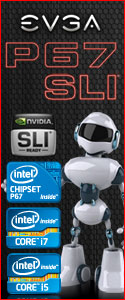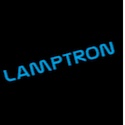First Looks
The product itself sports the same dark ominous looks as the outer packaging. The first thing that leaps out at you is this model has sliders instead of the usual dials. In all honesty we initially thought that the aforementioned would not have the sensitivity as normal dials. How wrong we were! Upon using these sliders during testing they were very sensitive indeed, however we digress. The sliders are easy to get hold of and are fairly robust at the same time. To the left and right sides of the product there what looks to be ventilation grills, however judging by the images on the box they also serve another purpose, that is to show the LED’s for a nice ‘light show’ experience.
 |
 |
 |
 |
Remember those ventilation grills that we were speaking of earlier? Well here they are
 |
 |
As shown, the front panel is a brushed-aluminium version and feels smooth, yet solid to the touch. Going around the product itself we notice very large coils on the MOSFETS. With 50 watts per channel we can certainly see why these coils are needed. We also see massive heat-sinks and once again at 50 watts per channel this WILL to be able to cope with the generated heat. If we add all this up, that is 250 watts in total that this controller should be able to handle.
Next we notice a deviation from the usual capacitors that Lamptron provide with their products. The Lamptron Endurance Capacitor are utilized on this FC-9, for further confirmation of this let us refer back to a previous product called the FC/Touch and the capacitors used there. See Overclockers Tech’s FC Touch Review for further details.
 |
Additionally there are six large Rubycon capacitors, which have a temperature tolerance of 105 degrees
Below are a more shots of the FC9 showing the capacitor differential. In addition some gratuitous shots of those amazingly large heatsinks and MOSFETS!
 |
 |
 |
 |
 |
 |
 |
 |
Another thing we noticed that is different from Lamptron of old, aka The FC 3, is that the wires for the power are physically soldered in (like the FC Touch) rather than being a socket based design. We prefer there to be a socket, then a cable running from there to the PSU. Whilst were are speaking of this it is noticeable that there are three Molex connectors attached to the main power lead. The reason for this is that Lamptron recommend that all three of these are filled up in order to insure safe power operation.
 |
 |
All in all, albeit with one or two surprises, a good showing by Lamptron and it is good to know that they still care about ‘quality’ and endurance of their products for the end user.
Next up we go into our testing phase. Let us see what the controller can do.

 Posted in
Posted in 





